
When it comes to the outdoors, what do we mean by sustainability? How should we prioritise conflicting interests? What constitutes taking your fair share? And is leaving no trace even possible? In a new series of environmental opinion pieces, Tomas Frydrych wrestles with these big controversies, and more.
The word sustainability is used a lot in an outdoor context. It makes us feel good but it's a hard notion to pin down. Sustainability is not a virtue in its own right, it simply means endlessly repeatable. In any scenario, whether sustainable is good comes down to the value we place on the activity itself and on the resources it consumes. Consequently, when thinking of sustainability we need to be asking 'what is (not) being lost', 'what is the value of this resource' and 'to whom', but also 'what is being gained' by doing this and 'by whom'. The value we assign to sustainability in any such specific context needs to come from balancing these questions.
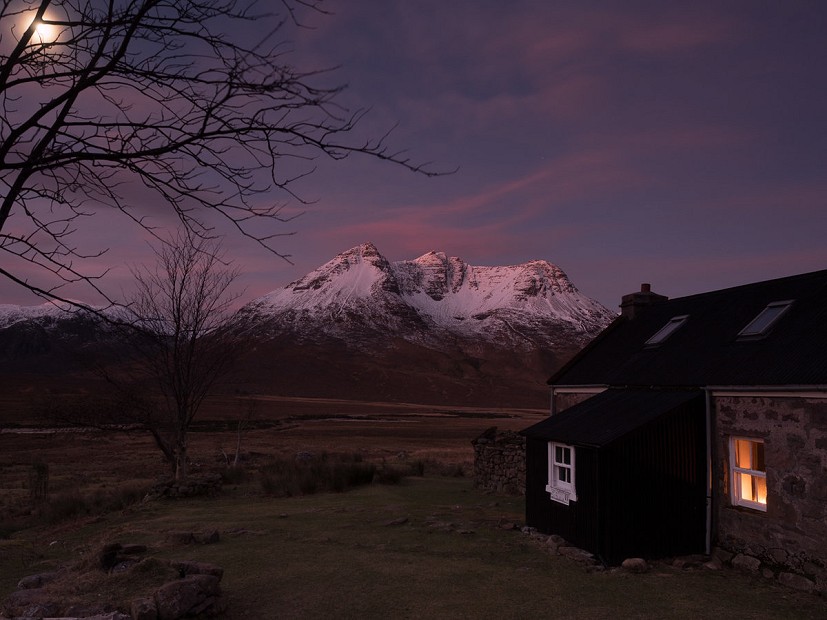
Activities that are inherently unsustainable can be sold as sustainable by carefully controlling their narratives. Generally, the narrower the frame of reference, the more likely for the activity to be perceived as sustainable. An example of how the frame of reference can be manipulated is the false equivalence between 'sustainable' and 'renewable' in the energy sector, which has a direct bearing on the siting of hydro schemes and wind farms. That's beyond the scope of this article perhaps, so here I merely want to observe that a meaningful discourse about sustainability needs an adequately defined frame of reference, and that one that is too narrow may create an illusion of sustainability where none exists.
An action or behaviour is sustainable if, and only if, everybody who comes to this place can engage in it and this place will continue to be fundamentally the same
Sustainability is not only a relative attribute, but also a dynamic one. When evaluating it, we need to consider the intensity and scale of the activities involved: most activities will appear sustainable at low intensities and volumes, yet become obviously unsustainable when the intensity and/or scale increase beyond a certain point. One walker skirting around the edge of a boggy path may cause little damage; but what if it's 100 walkers? The traces of one boulderer's over-use of chalk might soon wash off, but when every visitor is similarly heavy handed then we have a problem.
It is worth noting that environmental impact doesn't necessarily scale proportionately with volume: a 1000-miner gold mine is not equivalent to 1000 lonely prospectors panning for gold. Similarly, environmental impact does not scale proportionately with intensity; high intensities can cause immediate damage beyond nature's capacity to self repair. For instance a 300-strong race field of runners in a confined corridor can completely obliterate vegetation on the ground; this is quite different to the same 300 runners visiting individually over a longer period.
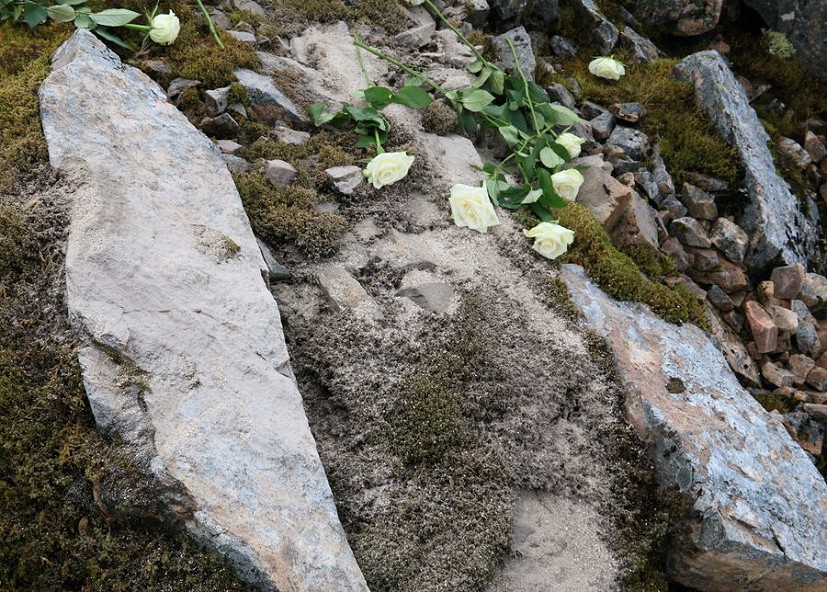
These observations about the value, relativity and dynamic nature of sustainability apply to the question of what does and doesn't constitute sustainable behaviour in the outdoors, to which we shall now turn to without further ado.
Heading into the Outdoors
The focus of this series is intentionally narrow: it is about us, recreational users of the outdoors. Outdoor recreation is good for our wellbeing, broadening our personal insight into ourselves and the world we live in. That is what we gain by venturing out, that is what is being lost if that space is eroded.
We are not the only group with vested interest in the outdoor space, and at times our interests compete with others. Some (such as nature conservation) I am sympathetic with, some I am emphatically against (grouse moors), some I am ambivalent about (industrial scale timber forestry). But that is a different discussion, for another time. The question before us here is simply this: what does it take for our recreational activities to be, in themselves, sustainable?
Leave No Trace™
For many years, Leave No Trace principles have been widely accepted as guidelines for responsible outdoor behaviour. Yet simply following LNT is not a guarantee that our behaviour is sustainable.
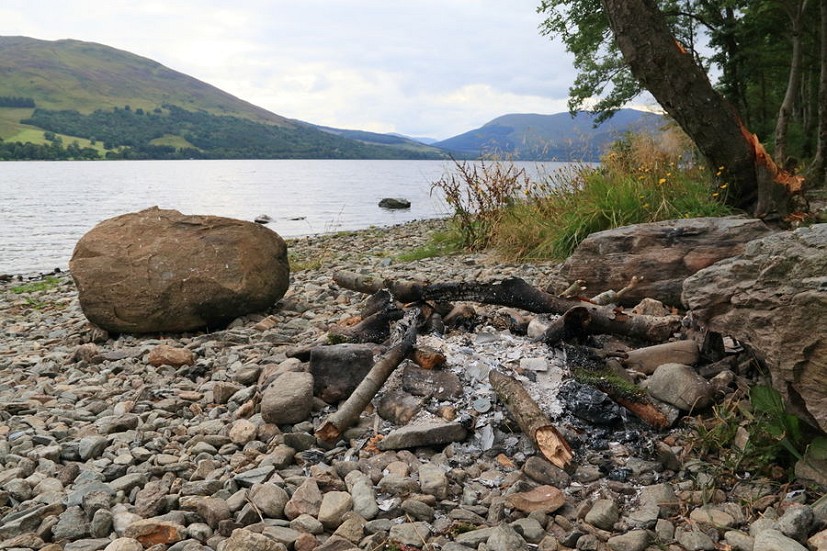
There are two main criticisms of LNT. Firstly, that the scope is too narrow, not considering the impact of our outdoor activities beyond the immediate locations where they take place. A case in point: a gas camping stove allows me to minimise my local footprint, but at an environmental cost of producing, transporting, and disposing of the gas cartridges. Such criticism, often under the moniker Beyond Leave No Trace, is a valid one. It doesn't mean that LNT principles are no good, but simply that they are not enough — I shall return to this point in greater detail in the second instalment of this series.

The other problem with LNT, which I want focus on at the moment, is that the principles are largely static and do not take adequately into account the intensity and scale of our activities. The simple truth is that there is no such a thing as 'no trace'. We always have non-zero impact, and as more of us are heading out there, the individual traces, no matter how tiny, are accumulating; even the hard gabbro of Skye is getting polished by our collective boots.
The Fair Share Principle
The amount of toilet paper lining our popular paths is a disgrace. I suspect we are rapidly approaching a point when we will need to start taking our poo home, as has become common practice in some parts of the US
If our activities in the outdoors are to be sustainable in terms of our impact on the places we visit, we have to start thinking of impact in collective rather than individual terms. To this end I wish to offer a very simple definition of sustainability:
An action or behaviour is sustainable if, and only if, everybody who comes to this place can engage in it and this place will continue to be fundamentally the same.
Our impact on the surrounding environment is a function of four factors:
- the nature of the activity (boots leave less trace than crampons);
- its duration (pitching a tent is different from a single step on the way to somewhere);
- its frequency (the trace of a single runner v. that of a 300 strong race field);
- and the characteristics of the environment itself (a granite slab is less affected by our feet than peat).
Sustainable behaviour requires that I, as an individual, consider, and adjust my actions in response to all four of these factors. Which brings me to what I think is the key point in all of this — sustainability is only achievable if none of us insist on claiming more than our fair share:
Fair share is that which everyone who comes to this place can engage in without fundamentally changing this place.
Fair share is unavoidably a function of popularity. At much visited locations it might be nothing more than taking a view. But unless we stick to our fair share the whole idea of sustainability doesn't stand a chance. There is no justifiable basis on which differing slices of acceptable damage could be allocated, and as soon as I take more than my fair share I lose any moral basis for asking others to only take theirs.
But, fundamentally, the idea of the fair share is not about the behaviour of others, it is about me and my responsibility to others. Equally, it is not about rules to be followed, but about developing a critical mindset with which we continuously re-evaluate our own actions in a wider context. Sometimes what was OK twenty years ago no longer is, and what is OK today might not be tomorrow.
So what, in practise...?
The intensity spike of big racing events has a much greater impact than the equivalent number of people passing through the course over a period of time. Run the Ring of Steall by all means, but please don't mass race it.
Here are some more practical thoughts. I make no claim that my judgement of what constitutes a fair share is necessarily correct, but I do believe that our current standards have fallen behind the times, and that more critical reflection on our activities is needed fairly urgently.
Make No Fire
I understand the allure, but it comes down to numbers. We are too many to be making fires in a country denuded of trees. In the few places where there are trees, often in the early stages of hard-fought-for regeneration, it is easy to spot where people make fires even when the fire rings have been removed: dead, and often not so dead, wood is stripped away, up to six feet above the ground.
Then there is the fire risk. The massive fire that swept Assynt in spring 2017 (see UKH news) really brought it home to me. A few weeks after the fire I was struck by the complete absence of the normally ubiquitous frogs and toads, and by the rapid colonisation of the charred landscape by bracken. That's the reality of fire.
Here is a question I want to throw out there for all the fire-smitten adventurers: How many selfies justify a wildfire? 100? 1000?
It's my contention that the selfie culture is at the heart of why having a fire has suddenly become so popular again, and worse, that it encourages unsafe practices (I will come back to the wider issue later in the series, when we look at sustainability in the age of social media).
There are only two coherent arguments that can be made for the use of fire: its survival value and the environmental costs of using a stove (see this well reasoned cased by Paul Kirtley). But at high participation numbers the latter is not a case for fire, but for reducing the impact of our stoves. As for the former, in the UK context it's a red herring; if you have had to make a fire in the UK in the last 20 years because your life depended on it, I'd love to hear the story!
The jobbies are too many
The amount of toilet paper lining our popular paths is a disgrace. I suspect we are rapidly approaching a point when we will need to start taking our jobbies home, as has become common practice in some parts of the US, but for now at we least need to learn how to make one responsibly. For some advice see this old UKH article How to Poo Outdoors.
There's one thing I'd differ with that piece on: I think you should always carry out all used toilet paper and tissues, as well as sanitary products! No exceptions. Some people seem to manage but I would not plan to burn used toilet paper; if you do, you may well end up burying it instead, for burning it is much harder than it sounds: it's damp, and in the UK, where it's always windy, a cigarette lighter is not enough to get the job done. You think carrying it out is gross? Not as gross as stumbling on someone else's.
Wild camping
Camping tends to concentrate human waste (urine, faeces, remnants of food, dish water, spit from brushing teeth). Popular camping locations turn into sites of biological hazard. In the hills of the UK we have seen this at multiple places; the shores of popular Lakeland tarns for instance, the vicinity of the CIC Hut (which then gained a toilet, though, the mind boggles, some objected); the roadside parking at Glen Etive and Glen Clunie also come to mind.
When wild camping, choose a site where not only will you not cause damage to fragile ground and pollute watercourses, but also:
Avoid camping at popular locations altogether (even if no-one is around). This includes both places where lots of other people camp, but also places where others simply spend time, e.g., popular mountain summits — nobody wants to eat their sandwiches a few feet from where you had a piss, or worse, during the night. For more advice see Ten Top Tips for Wild Camping.
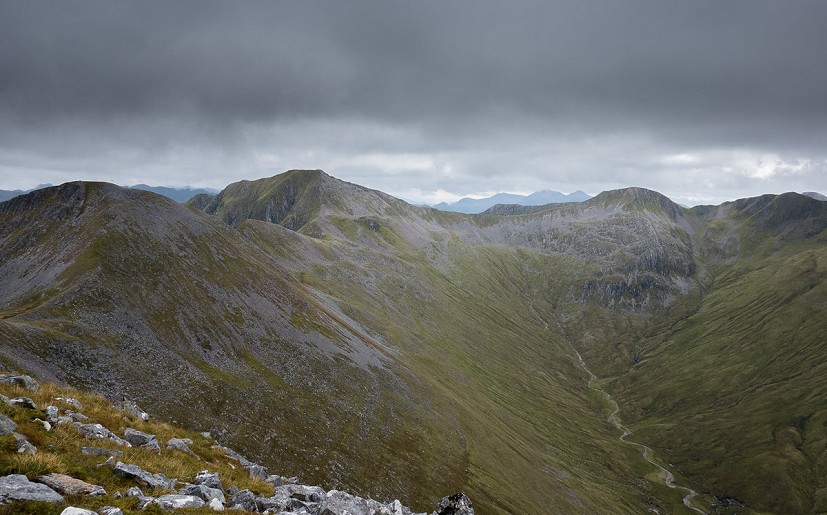
Mass events and races
As a runner, I have misgivings about mass adventure races, and such, that take place at already popular natural locations, following already well used routes. Leaving aside the left-behind markers and gel packets, and the impact on other visitors unfortunate to be out on the same day, the intensity spike such events create results in impact much greater than the equivalent number of people passing through the course over a period of time. I wish the organisers of such events would avoid unsuitable erosion prone locations, but we, the potential participants, should do our own thinking about the suitability of a given course too, and choose not to take part when they don't. Run the Ring of Steall by all means, it's a great outing, but please don't mass race it.
Mountain biking
When bringing a bike to popular locations, stick strictly to well drained paths. The whole question of mountain bike impact is a thorny one, with a strength of conviction on both sides of the argument. But even the bike lobby would struggle to deny that there's a legitimate argument to be had. I'll address mountain biking at length in a later instalment of this series.
Final Thoughts
I believe the fair share approach is a viable way forward. It is not asking that we stop doing what we are doing, merely that we learn to evaluate the impact of our actions at any given time and place in the context of everyone else's actions rather than in isolation; that we see what we are doing through the eyes of others who come to the same place, and behave accordingly. The outdoors is not static, and so neither can be our ethos.
The alternative, I suspect, is paved paths, (more) by-laws, national laws and enforcement, and the fees to pay for it all, as per the US national park model. I know which future I prefer.
In the next part of this series we will take a look at the impact of our outdoor activities beyond the immediate locations we visit, and the concept of 'Beyond Leave No Trace'.
- OPINION: It's Time to Go Beyond 'Wilderness' 3 Jun, 2019
- OPINION: The Trouble with Social Media in the Outdoors 27 Aug, 2018
- OPINION: How Green is Your Gear? Not Very 23 May, 2018

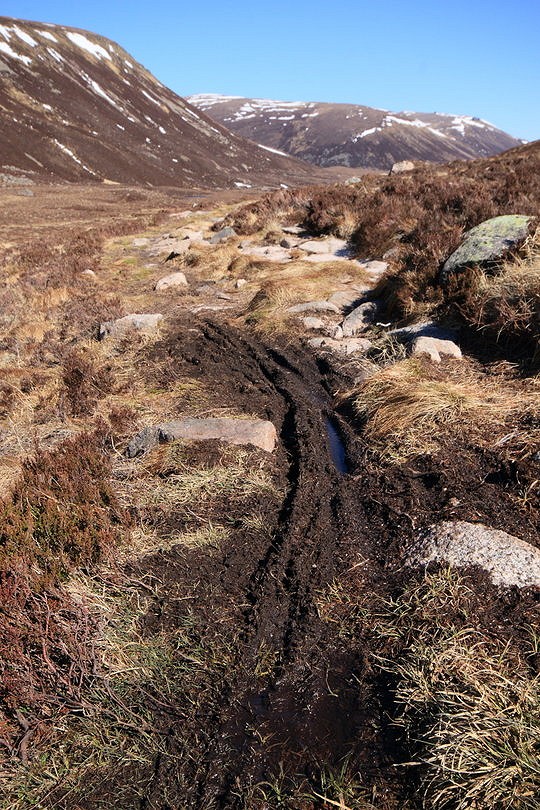
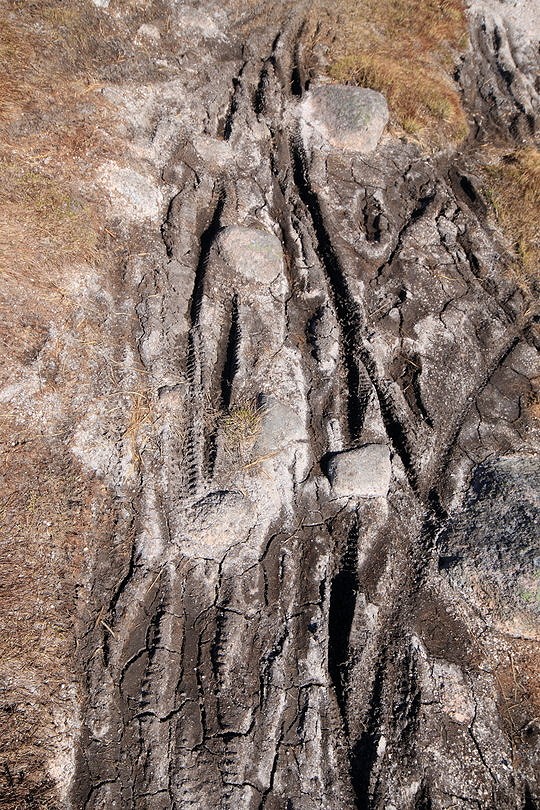
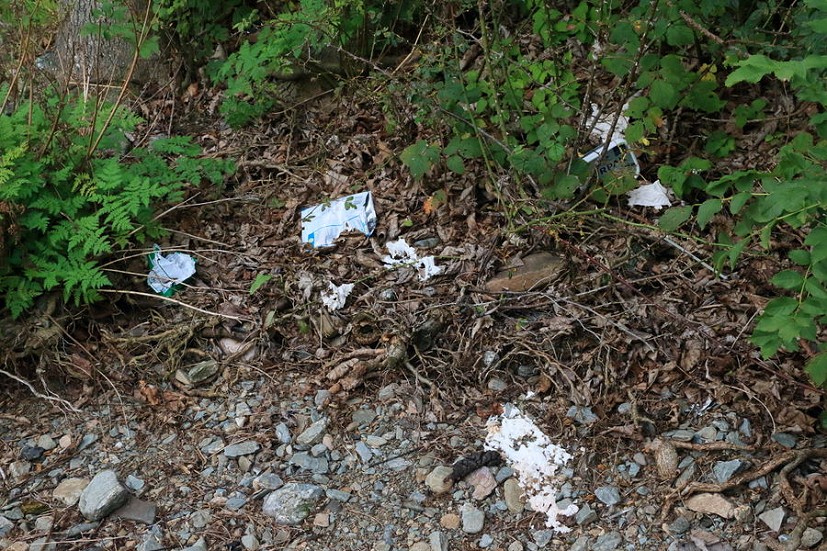

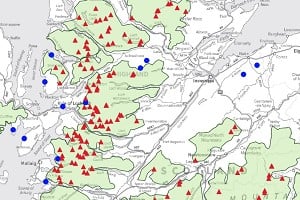

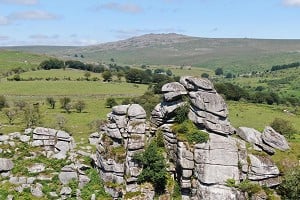
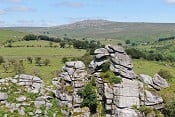








Comments
Interesting piece. I see that it takes a very anthropocentric definition of sustainability. Does the earth care if crampons scratch the rock? Does birds care if we have a small fire? Do bees care if we dump in the woods?
Are the ecological and social problems faced by the human race not bigger than a widened path?
I began reading this and was rather shocked but what I perceived as massive holes lacking information. While writing the below however it occurred to me that I have worked in the environmental/conservation sector and studied environmental principles for almost a decade making me most likely not the typical or target audience. For this reason, I would like to apologies about the below twice, once as it is probably overly critical and for the second time because I decided to post it anyway at the risk of causing offence, but I do feel what I have written begins to fill some of the ‘holes’ I perceived:
Within the environmental sector and further afield the definition of sustainability is typically taken from the Brundtland reports definition of sustainable development see here: http://www.iisd.org/topic/sustainable-development. This can be summarised as a sustainable activity being one which meets the needs of the present without compromising the ability of future generations to meet their own needs.
There seems to be a large disparity here in the difference between environmental impact and sustainable activity, renewable energy has a considerable impact but is sustainable, HEP is a good example of this. Walkers etc. impact can be sustainable providing the environment is given sufficient time to recover or as mentioned frequency is altered.
The differences between considering one’s impact and ensuring one behaves sustainably I feel is not addressed here, the difference is important. Humans are a component of the environment it is acceptable to cause some impact, but we must not push past environmental change thresholds if we want our existence (or activities) to be sustainable (regardless of what the Trump administration believes!).
The preservation of grouse moors is a perpetuation of a more unnatural environment than some forms of forestry halting the ecological process of ‘succesion’. While planting Pacific North American conifer species plantations are also an artificial environment if managed properly it can be more sustainable and provide more ecosystem services, especial with the Forestry Commissions shift towards continuous cover forestry management.
Leave No Trace focuses on environmental impact not sustainability, nor am I aware of it claiming too. However, a merger of Leave No Trace with wider sustainable activity/lifestyle consideration would be a progressive and good framework. I recommend the author reads up on the “tragedy of the commons” and the economics concepts of ‘goods’: Excludable / Non-excludable and Rivalrous / Non-rivalrous. Also the control of externalities and cheaters/abusers of open access public goods (sustaibale fiushing being the classic example).
Regarding the “Our impact on the surrounding environment is a function of four factors” this is similar to a small component of a lifecycle assessment which are often conducted to gain a full perspective of an activity’s/company’s/product production’s impact by environmental managers. I do however accept that the four factors are an acceptable subset to consider.
I like the considerations and reflections explain/made about the listed activities, but more comprehensive information on the listed activities could be reference e.g. Forestry commission ‘stick and flick’ (https://www.forestry.gov.uk/forestry/infd-6mhjxj), Snow White facility (https://www.cairngormmountain.org/conservation/), and I am also surprised to see no mention of the ‘Mend our mountains’ campaign.I expect you are preaching to the converted here and you risk ‘re-inventing the wheel’, there is a lot of information already available that can be expanded on and referenced for those with further interest.
I do look forward to the ‘Beyond Leave No Trace’ article.
Thank you.
Since it's about human impacts in the outdoors isn't it only ever going to take an anthropocentric definition?
And I'm sure some birds would care if the small fire became a big fire that burned their habitat!
I think it's a very welcome piece and look forward to the rest of the series. It's rare that you see people questioning the legitimacy of some outdoor activities despite the fact that they're clearly causing negative impacts.
In my work I'm increasingly coming against this. There tends to be a general willingness to try to mitigate for harmful impacts but never to actually stop the activity that's causing the harm.
In the big scheme of things chalk, footpath erosion, crampon scratches,jobbies are irrelevant. Fires also provided they don't start a bigger one. Unless you completely destroy a location where a rare plant exists in isolation natural environments recover quickly. The re-growth in areas that were out of bounds due to foot and mouth showed this.
What does the most damage is us travelling miles to the outdoors, on roads built big enough to cope, to stay in buildings constructed purely to house us there. This has a lasting impact.
Go to the start or finish areas of a big running event in the hills two years later and the field or run in areas that were quagmires will be normal again. It's the use of natural resources that aren't replaced and pollution that is the problem.
And that I guess makes most of us hypocrites.
Nice, well-considered piece. I have been thinking quite a bit about this. Essentially, if we all do something, then it becomes unsustainable, whatever that activity is. So I guess there is a conflict between the ever-widening participation in our chosen sports/past-times and sustainability. There are obviously some advantages to greater participation (e.g. more people get to enjoy the benefits of the activity; more cameraderie; more revenue for outdoor kit manufacturers equals better, cheaper kit; more revenue from tourism can support communities). But these advantages seem to come at a cost, which is the impact on the 'environment' or locality (i.e. footpath erosion; worn, polished climbs; conflict with landowners; litter; effects on wildlife and plantlife; loss of identity of communities in the move towards tourism-centric models of income). These detrimental effects are perhaps particularly noticeable in the UK where, compared to the US, we are much more densely populated and have relatively small areas of national park/wilderness per head. So my question is, when is there 'enough' partcipation in a given sport (e.g. climbing, walking, 'wild-camping'). Do we really need more books on wild XXXX [insert sport]? Do we really need UNESCO status for a Lake District that is already bursting at the seams with visitors? Do we really need more 'athletes', ambassadors, events? A case in point would be a recent piece I saw on on 'wild camping' in the national news. Really? Surely if everyone chooses to do that, then it quickly becomes something other than wild camping? We do live in a world with finite resources and the outdoors/wilderness is one of these. For me personally, I enjoy the 'wild' or 'explorative' aspects of the places I visit. There is a part of me that wants to share these experiences with the wider world (and sometimes I do). But I also recognise that if I do this, this might be to the detriment of the place in question. I also recognise that I was very lucky to have had the opportunities that I have had. And I probably got into those sports because of books, magazines, programmes by the BMC and local groups designed to widen participation! However, increasingly, I wonder if mass advertising is now having an overall negative effect and taking its toll on the places that I love. And by this I mean more advertising by outdoor manufacturers/tourism boards, etc, as well as small scale advertising by many indivduals (e.g. social media, events, books/articles/media). I'm obviously guilty of many of these things too and I'm well aware that I'm posting this on a forum! But my question is this: is ever-widening partcipation in outdoor activities in the UK sustainable and if not, what is the solution?